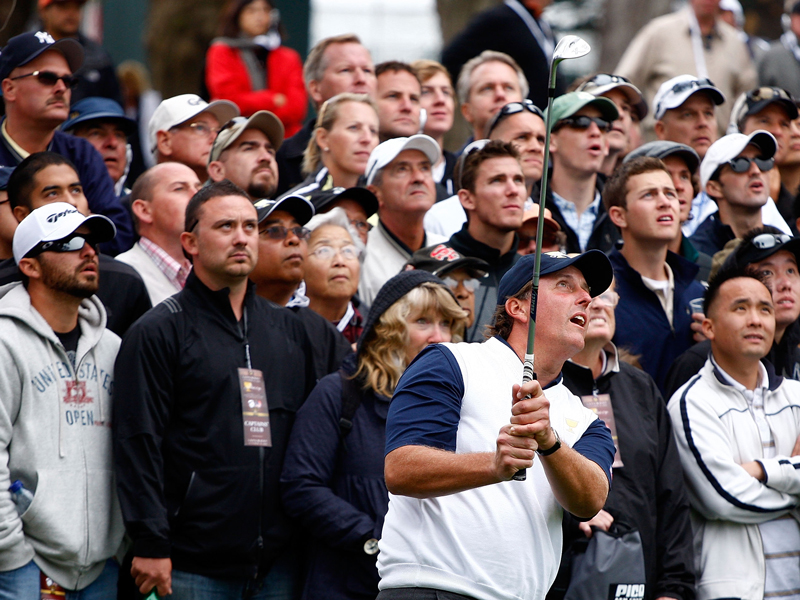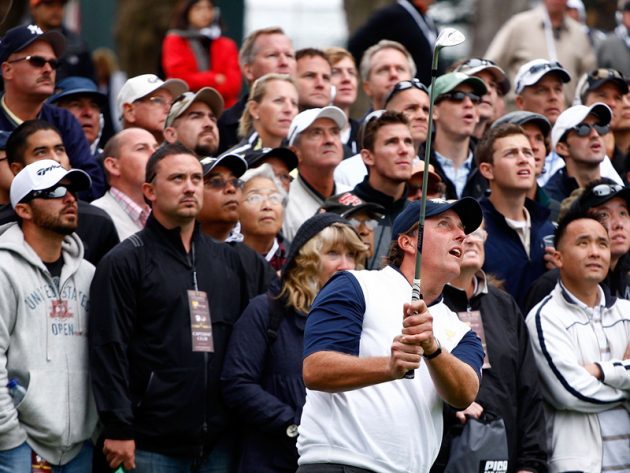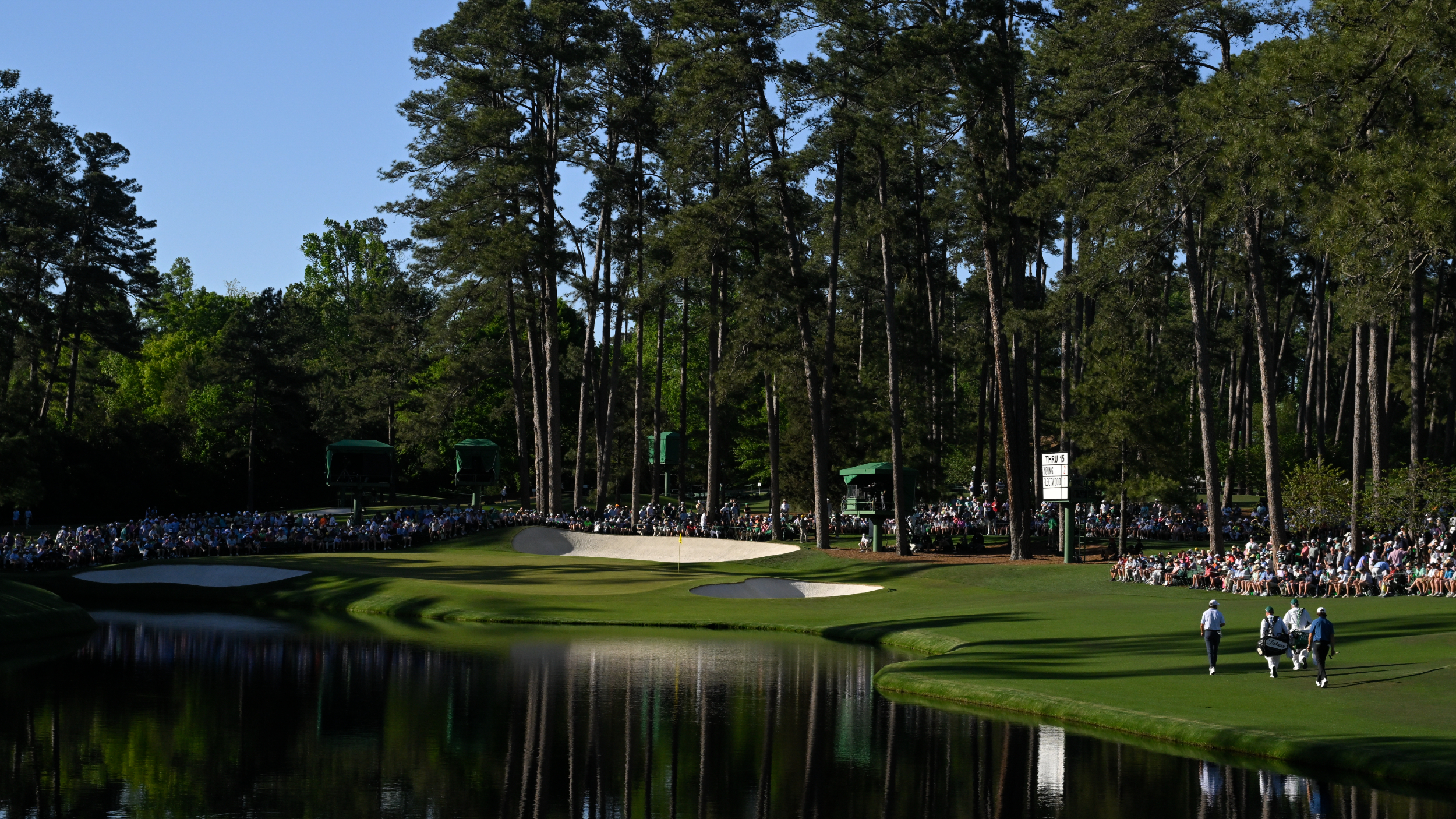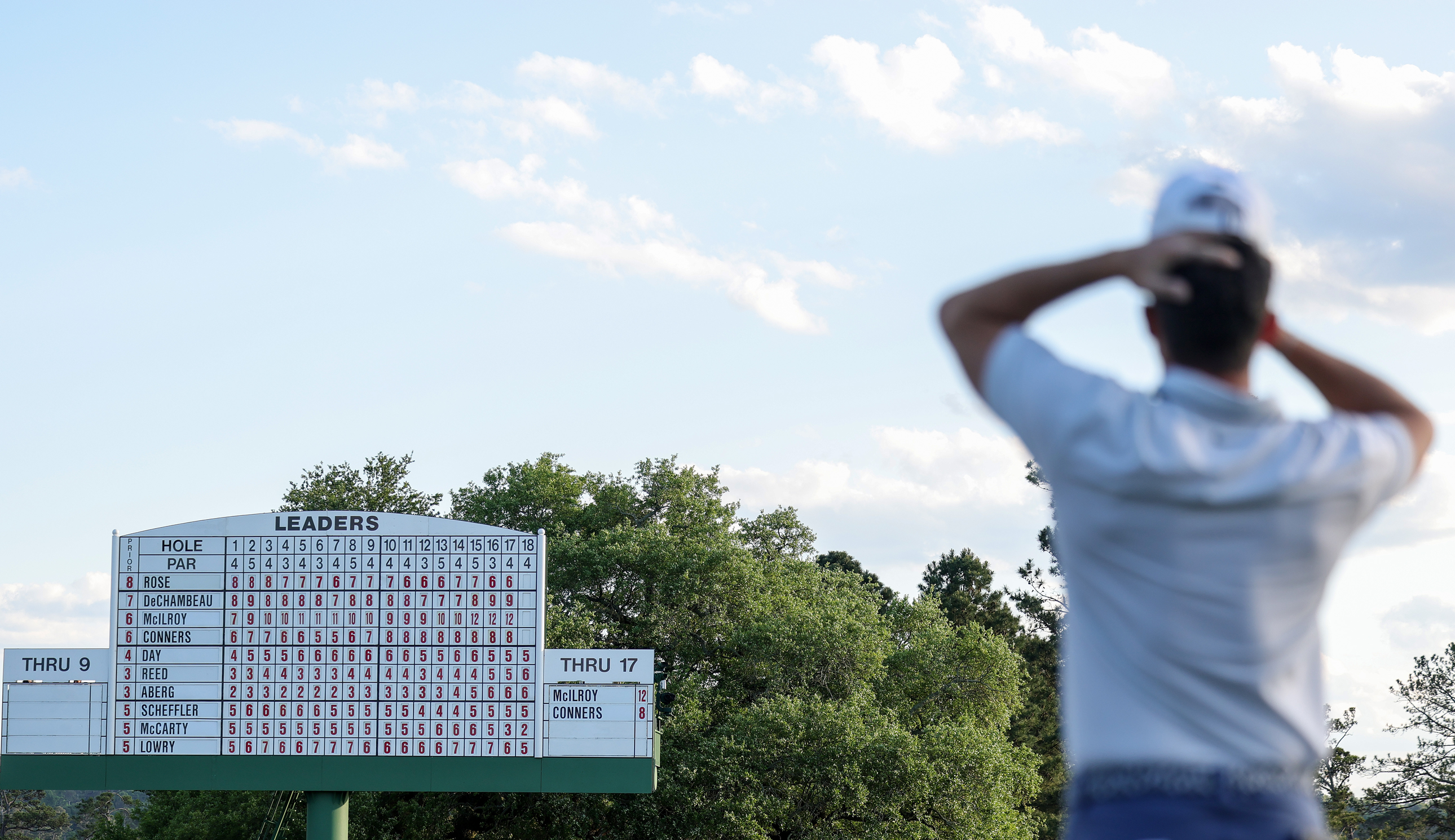Is The Chip And Run More Useful Than The Lob Shot?
Which is better, keep it low or let it fly high?


GM regulars Jeremy Ellwood and Fergus Bisset debate whether or not the low running shot can do more for your game than the high-flighted flop.
Is The Chip And Run More Useful Than The Lob Shot?
Yes says Jeremy Ellwood
There are shades of Flash Harry vs Steady Eddie or even the hare and the tortoise about this debate.
One of these shots is all Hollywood, while the other is more local amateur dramatics.
Before we go too far, yes, if you haven’t got some kind of higher chip in your arsenal, things are going to be somewhat tricky when there are bunkers, mounds or other obstacles to negotiate.

But as a percentage shot, the chip and run knocks the lob shot into a cocked hat.
Get the Golf Monthly Newsletter
Subscribe to the Golf Monthly newsletter to stay up to date with all the latest tour news, equipment news, reviews, head-to-heads and buyer’s guides from our team of experienced experts.
I’ve spoken to countless tour pros over the years about chipping, and their near-unanimous advice is that, whenever possible, you should be getting the ball rolling as soon as possible on your chips, whatever club you might choose for that shot.
Yet time and again you will see amateurs of all handicaps reaching for their most lofted weapon, sometimes even from the fringe!
Loft is not your friend around the green – it’s a much higher-tariff shot that requires greater precision in the execution and strike and brings with it greater risk should either of those two elements misfire spectacularly.
The chip and run is a far more reliable and less risky shot that should be your first port of call around the greens if you’re serious about increasing your up-and-down percentage.
You can use as low a lofted club as you like – even a hybrid – and a much simpler swing with fewer moving parts to potentially go wrong. It can even be a mere extension of your putting stroke with virtually zero wrist break.
So, next time you find yourself greenside and reaching for your 60˚ wedge, ask yourself, “Is this really necessary?” More often than not, the answer will be, no.
Is The Chip And Run More Useful Than The Lob Shot?
No says Fergus Bisset
The lob shot is one of the most difficult and dangerous in golf but, if mastered, it’s also one of the most useful and can salvage scores in all sorts of tricky situations.
Many instructors will say it’s best to get the ball on the ground and running quickly when possible.
It’s true; it’s the percentage play as there’s more margin for error.
But it’s not always possible to keep the ball low.

What if you have to carry a bunker or thick grass before the edge of the green?
A pond or stream perhaps?
The chip-and-run isn’t going to get the job done in those circumstances.
Only a high, floated shot will hold the green.
The lob demands precise contact between club and ball, but when carried out correctly, it’s a tremendously effective shot.
Undulations and uncertainty on ground conditions are eliminated and the ball lands near vertically and softly on the green, coming to a halt quickly.
If you have the touch to play the testing lob shot, then you can almost certainly turn your hand to a jabbed chip-and-run when the occasion demands.
But, if you rely on the low poke with the 7-iron, you could find yourself stymied when only a high, soft shot will do.
Uncomfortable with the lob, you’ll likely either duff into the trouble you were hoping to clear, or “skull” the ball into more trouble across the green.
For the average amateur, having the lob at their disposal will help them avoid disasters on a near weekly basis.
The lob shot is the niftiest spell in the short game wizard’s book of magic.
It can dazzle but it can also salvage seemingly lost causes.
A great chip-and-run earns knowing appreciation of the exponent’s canny sensibility, a great lob shot earns admiration and envy for its high tariff and its practitioner’s exceptional skill in execution.

Fergus is Golf Monthly's resident expert on the history of the game and has written extensively on that subject. He has also worked with Golf Monthly to produce a podcast series. Called 18 Majors: The Golf History Show it offers new and in-depth perspectives on some of the most important moments in golf's long history. You can find all the details about it here.
He is a golf obsessive and 1-handicapper. Growing up in the North East of Scotland, golf runs through his veins and his passion for the sport was bolstered during his time at St Andrews university studying history. He went on to earn a post graduate diploma from the London School of Journalism. Fergus has worked for Golf Monthly since 2004 and has written two books on the game; "Great Golf Debates" together with Jezz Ellwood of Golf Monthly and the history section of "The Ultimate Golf Book" together with Neil Tappin , also of Golf Monthly.
Fergus once shanked a ball from just over Granny Clark's Wynd on the 18th of the Old Course that struck the St Andrews Golf Club and rebounded into the Valley of Sin, from where he saved par. Who says there's no golfing god?
-
 Why The 16th Pin Has Been Moved From Its Traditional Spot For The Masters Final Round
Why The 16th Pin Has Been Moved From Its Traditional Spot For The Masters Final RoundThe 16th pin at Augusta National is in an different position that normal for the final round of The Masters, but why is that?
By Mike Hall Published
-
 Seve Ballesteros And Brooks Koepka Among The Big Names That Rory McIlroy Would Join As A Five-Time Major Winner With A Masters Victory
Seve Ballesteros And Brooks Koepka Among The Big Names That Rory McIlroy Would Join As A Five-Time Major Winner With A Masters VictoryRory McIlroy leads The Masters going in to the final round and, if he were to win, he would join an illustrious list of five-time Major winners
By Matt Cradock Published